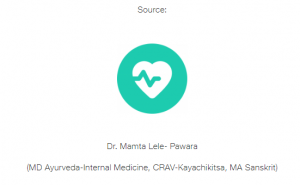[the_ad id=”6076″]
In our fast-paced, modern world, the term “multi-tasking” has been glorified as a skill to handle multiple tasks simultaneously. We pride ourselves on juggling various activities at once, often believing it’s the most efficient way to tackle our workload. However, buried beneath this belief lies a gem often overlooked: the power and effectiveness of single-tasking.
Single-tasking, in its essence, revolves around the idea of focusing on one task at a time. It’s a deliberate choice to give our undivided attention to a singular activity without allowing distractions to infiltrate. While the concept might seem counterintuitive in a society that glorifies busy schedules and constant activity, research and practical examples underscore the significant benefits of embracing single-tasking.
Numerous studies have highlighted the drawbacks of multi-tasking. Contrary to popular belief, the brain doesn’t efficiently handle multiple tasks simultaneously. Instead, it switches rapidly between tasks, resulting in cognitive overload and decreased productivity. According to a study published in the Journal of Experimental Psychology, task-switching can reduce productivity by as much as 40%. Moreover, the American Psychological Association notes that attempting to perform several tasks at once can increase stress levels and diminish the quality of work produced.
On the other hand, single-tasking fosters a sense of focus and concentration, leading to improved productivity and higher-quality output. When we concentrate on one task, we engage our brain’s full capacity, allowing for deeper understanding and more creative problem-solving. Research conducted by Stanford University revealed that individuals who identify as high multitaskers tend to perform worse at tasks requiring focus and selective attention compared to those who single-task.
Beyond the realm of productivity, single-tasking promotes mindfulness and mental well-being. By immersing ourselves fully in a task, we become more present and aware, experiencing a sense of flow where time seems to vanish. This mindfulness can alleviate stress, enhance creativity, and improve overall satisfaction with our work.
In the professional sphere, many successful individuals swear by the practice of single-tasking. From renowned authors to business moguls, they attribute their accomplishments to the ability to focus solely on one task at a time. For instance, Elon Musk, the visionary entrepreneur, emphasizes the importance of focusing intensely on a single task before moving on to the next, contributing much of his success to this approach.
Practical tips for adopting single-tasking include:
1. Prioritise tasks: Identify the most critical task and allocate dedicated time to complete it without interruptions.
2. Eliminate distractions: Minimize interruptions by silencing notifications, closing unnecessary tabs, and setting specific time blocks for focused work.
3. Practice mindfulness: Engage in techniques like deep breathing or meditation to enhance focus and reduce mental clutter.
4. Take breaks: Incorporate short breaks between tasks to rejuvenate and maintain mental clarity.
In conclusion, single-tasking stands as a powerful antidote to the overwhelm induced by the incessant demands of multitasking. By embracing this approach, we can unlock heightened productivity, foster creativity, and cultivate a more mindful and fulfilling work experience in our increasingly hectic lives. As the adage goes, “Less is more,” and in the case of single-tasking, this rings undeniably true.

